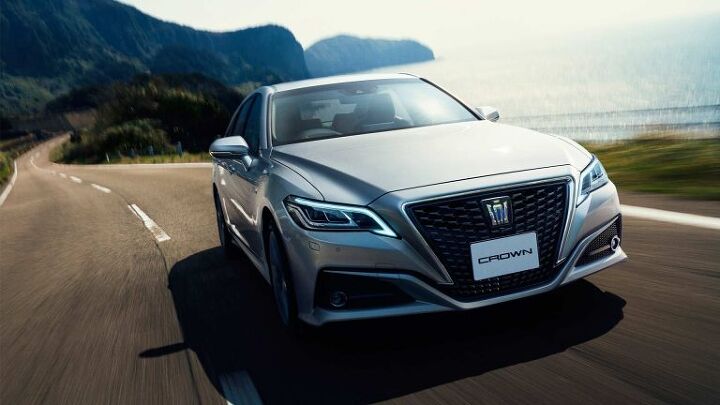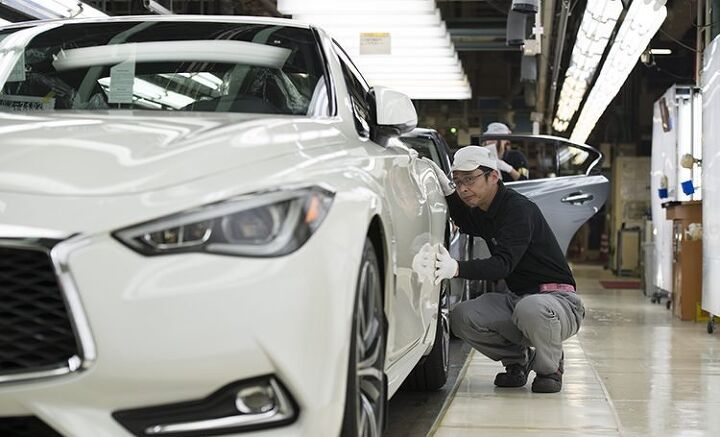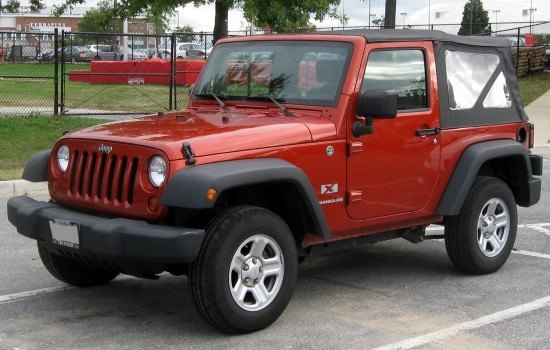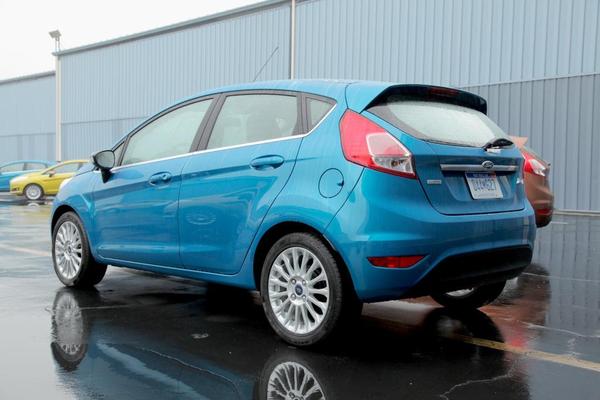#Product
Report: Toyota Crown Reimagined as SUV & Coming to North America
Iconic for being Japan’s default taxi or police cruiser for decades, the Toyota Crown has been in production since 1955. Our market even got a taste of the model during its golden years, with the automobile becoming the brand’s first product ever to be exported to North America. While it would eventually be supplanted by the Corona Mark II/Cressida in the 1970s, we’d see parts of the vehicle return to our market through the Toyota Avalon and Lexus GS.
Meanwhile, the Crown executive series of sedans (and occasionally wagons) have been going strong in Japan for nearly 70 years — evolving gradually in the manner that Toyota typically prefers. But there have been stirrings that the company might discontinue the model for Japan, replicating FAW Toyota’s decision to turn the car into a sport-utility vehicle (based on the fourth-generation Highlander) in China. Now we’re getting reports that a similar scenario is being planned for other major markets, including the United States.
Honda CEO: 'EVs Will Not Be Mainstream'
The tide of praise and promise that swept in at the impetus of the 21st century to support electric vehicles is receding. The same goes for the entire concept of autonomy — though this has been pulling back faster than Nicholas Cage’s hairline, and with only a fraction of its grace. Over the last few years, the number of voices shrugging off advanced technologies has increased, creating a rift between cynics and believers.
While largely disinterested in the ramifications of the technology, automakers have also tamped down their previously bloated expectations. Those pushing alternative powertrains and vehicular autonomy are becoming more based, but so too are the companies that never bothered chasing them quite so zealously in the first place.
Honda CEO Takahiro Hachigo says his company still has serious doubts as to just how lucrative electrification and mobility projects will actually be, suggesting the costs and complications of such technologies probably aren’t worth pursuing as a primary objective.
Nissan and Subaru Faulted for Decades of Improper Inspection Procedures
Japan appears to be having a problem with its quality control. Nissan Group is conducting updated inspection procedures after details emerged that it allowed uncertified employees to conduct final vehicle checks. However, the Japanese government continues to find issues with the automaker’s practices, forcing it to temporarily suspend new vehicle registrations.
Early reports from an external investigation commissioned by Nissan suggest the certification problem may have begun in 1979.
Subaru faces a similar plight. With Nissan’s inspection issue looming larger than anticipated, Subaru has admitted to following improper procedures for its domestic products. On Friday, the carmaker said final inspections at its main plant have occasionally been handled by employees not listed as certified technicians. The problem has persisted for more than 30 years, according to the manufacturer.
General Motors Will Allot More Product to Oshawa Besides Pickups: Sources
After a long-fought public relations campaign by General Motors Canada and Unifor, and a collective agreement that sees Unifor-GM temporary workers converted to full-time employment, Oshawa Assembly is on the up as pickup truck final assembly will run alongside Cadillac XTS production in the future.
However, that truck production can’t sustain Oshawa Assembly in the long-term, and sources within the company are saying more product is on the way for the beleaguered plant.
According to two General Motors representatives, one on each side of the border, Oshawa will produce vehicles in addition to the still unannounced pickup final assembly and Cadillac XTS.
Chrysler Changes Product Plans Again, Extends "Sell-By Date" Of Avenger, Caravan, Wrangler
Chrysler CEO Sergio Marchionne may not be fond of changing up his outfits, but he certainly has no problem mixing up product plans. The latest news out of Auburn Hills suggests that Chrysler will be extending the lifespan of some key products for up to another 5 years.
Why There's No Powershift Option On The Ford Fiesta Ecoboost
During the launch of the Ford Fiesta 1.0L Ecoboost, multiple outlets ran articles parroting Ford’s PR line about the lack of an automatic transmission. Apparently, Ford declined to offer an automatic or Powershift dual-clutch gearbox on the 3-cylinder Fiesta since a two-pedal option would run counter to the 1.0L’s stated mission of being both fun to drive and good on gas.
Acura Signs The Death Warrant For The ZDX
Acura may be refreshing the ZDX for 2013, but the company has simultaneously signed the car’s death warrant, killing off one of the most reviled cars on sale today.
Would You Trade Places With A Chrysler Dealer?
It’s not a question that should leave many folks on the fence, but apparently there are at least a few Detroit-area journalists who might be willing to consider the career change. “Dealers optimistic about Chrysler’s future” proclaims the Detroit News headline from NADA’s annual convention. A more accurate headline (such as USAToday‘s “Chrysler dealers face new-model drought”) probably should have included the term “punch-drunk” to better explain this unexpectedly sunny outlook. One grizzled ChryCo dealer sums up the mood with aplomb:
We’re the toughest fighters. We’ve always been 3 or 4 (in the marketplace). We’ve never been spoon-fed. We have to fight for every piece of ground… There’s light at the end of the tunnel; I just don’t like the length of the tunnel.
Too Good To Be True: How Toyota's Success Caused Killer Decontenting
The ongoing kerfluffle over Toyota’s recall of over 2m vehicles for a gas pedal defect which (allegedly) caused unintended acceleration has caught much of the automotive media flat-footed. How could it be, many have wondered, that the automaker most associated in the US market with the concept of quality has slipped so badly? As TTAC’s Steve Lang recently discussed, Toyota has been on a decontenting binge since the mid-to-late-1990s, putting profit above the quality obsession that had defined its operations up to that point. As a result, the current generation of decontented Toyotas and accompanying quality issues and recalls can be seen as the culmination of a long-term trend. But why did that transition take place? Though it’s easy to blame greed and mismanagement for the decline in Toyota’s quality, the decline in standards was actually a natural progression of Toyota’s constantly-evolving, efficiency-obsessed production system.
Product Review: Harbor Freight Hydraulic Scissor Lift
Having lead a life of high adventure in my youth, scaling pinnacles of rocks and ice, I never imagined that I’d meet my end, flat on my back crushed beneath a falling car. I was setting a new land-speed record for butt-shoulder-shuffling on my way out from under the creaking, swaying mass of 1999 Volkswagen New Beetle-shaped steel groaning menacingly above my body. Moments before the VW started moving it was resting firmly on my tried, and until-that-moment trusted ramps and jack-stands. But now I was going to die, life flashing before my eyes, staring swaying death in the face as my wife’s “cute bug” transformed into Damocles’ Sword, or Poe’s Pendulum, my garage floor playing the Pit. The tremor ceased as my head cleared the oil pan, and the Beetle slowed, then stopped making the horrific creaking noises as the jack-stands stopped wobbling. I cleared the bumper and leapt to my feet in a single motion, and relief swept over me like the expected post-quake tidal wave should. “Damn, I’m still alive!… in fact… I’m completely unharmed!” Running into the house I yelled at the family: ‘Did you guys feel that?!” … only to be met with a non-chalant: “feel what?”
In retrospect the tremor which scared me out from under the car was only a barely-rattle-the-china 3.2 on the Richter Scale, but it drove home an indelible lesson to this DIY mechanic living in a region where three tectonic plates meet: I NEED to get a lift!

























Recent Comments